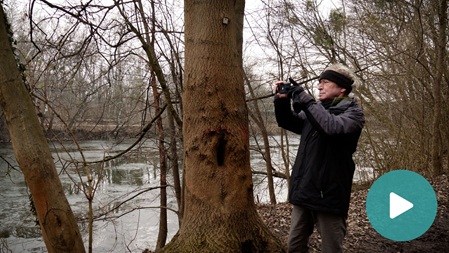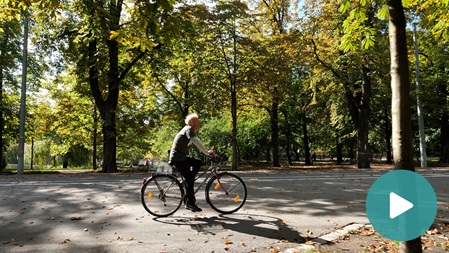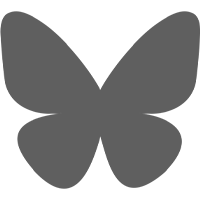Eberhard Jordan: The development of the myCOPD-Challenge actually goes back to Jupp Brandl, who gave me the idea. He's from Cologne, and he went up Cologne Cathedral with oxygen. And back then, I thought to myself, "Okay, that's an idea, that's something that can be marketed well." And in my recklessness, I then said, "Okay, then I'll go up St. Stephen's Cathedral." My attending physician asked five times back then if I really wanted to go up there. And I said, "Yes, there's no other way. I'm going up there and that's what I'm training for." And we managed to do it. When I was standing at the top, I thought, "What's next? The Danube Tower." So pure recklessness. After we managed the Danube Tower so wonderfully two years ago, I inquired about what the next highest building is. And that's where we are now. It's the Millennium Tower.
Martin Gütlbauer: What my role is in the challenges has changed a bit over the years. So for me, at least, it was at the beginning with St. Stephen's Cathedral first of all a "Can we even get up there? Is it too far? Can we even do it?" That was a question for me. Then, when we trained together, it was about breathing rhythm. Do we do one step, two steps per breath? What's best? Where do we turn? Where do we take breaks if necessary? Should we take breaks or not? And after that it developed into, well, higher, further. Overall, I think I've become more relaxed that we'll get up there. But the question is also how.
Dr. Milos Petrovic: My name is Milos Petrovic, I'm a pulmonologist and the medical support for the myCOPD-Challenge. My task is hopefully not to have to act, and that will certainly be the case, because Eberhard is quite fit. And I'm hopeful that it will work out without me having to take any medical action.
Eberhard Jordan: What else is happening this year? Of course, this is now the start of the public campaign. Otherwise, it means training a lot, because this year was a bit mixed due to Corona and all this solo training didn't establish a rhythm like it did originally. That means I have a huge task ahead of me here. And I know that the stairs here are higher than at the Danube Tower. And it's also strenuous for the muscles.
Martin Gütlbauer: How do you train for such a challenge and, above all, where? Where can you find a staircase that isn't too small, so you can really go up several floors? Which is important to stay in rhythm. And about a year and a half ago, Eberhard found a building in the fifth district with 19 floors that you can go up. Where the rhythm can be trained well, and that's where we actually always train now.
Dr. Milos Petrovic: You have to say, with each year, we don't get any younger, regardless of the COPD. I notice it myself. Going up stairs is a little harder for me. But from year to year the challenge is always more demanding because there's always a new goal. And this year it's special in terms of the number of steps and stairs - much more than last year. And that is simply also from a health perspective, from a physical perspective, a new challenge.
Martin Gütlbauer: Eberhard is relatively well-trained, he does his workouts at home. He does that entirely without me. Now, with me, where we really train stair climbing. Well, if the basic fitness is right, it's now more a question of rhythm and also, so to speak, seeing how far we get. Yes, I would start about two or three months beforehand. If someone were less fit, then I would definitely start a little earlier. And also incorporate strength training and endurance training separately from this stair climbing training, so that the basic fitness is right.
Dr. Christoph Puelacher: For me as a doctor and for the Reha-Innsbruck, it's a matter of course that we are supporting the myCOPD-Challenge again this year. We also did that in 2019 and it's important to us that all those affected, who suffer from a higher-grade COPD, that they are properly guided through medical exercise therapy back to a place where they can participate well in both social and societal life. The message is: whoever takes their medication, whoever stops smoking and who participates in medical exercise therapy or also carries it out, can influence their disease or its course in a very, very positive way. Many people can also stop it. And that is very, very important. Many thanks to Ernst Vettori, that as a top athlete, he supports this campaign. It is very important to us that the public understands that physical training according to the medical training theory, that this is a very essential point, so that one can properly manage and stop the disease. I would also like to thank Ms. Oberndorfer, who has energetically supported the whole thing and is the very soul of this movement here.
Ernst Vettori: I support the myCOPD-Challenge because of two things: a) I want to raise awareness of this not-so-rare disease and b) because I want to motivate people to move and especially the COPD patients, who will be climbing up this take-off tower at Bergisel. As a former top athlete myself, I know what it means when you get better through regular training and thus achieve feelings of success and accomplishment thereby. So please come and support this great event. The myCOPD-Challenge will take place on November 17th at 10 a.m. here at Bergisel.
Eberhard Jordan: What else needs to be done within the scope of all the preparations? Of course, this also includes looking for sponsors and I would hope that not only Innsbruck, which I'm very happy about, that they are participating again, but that other rehab facilities will also contact us and say: "Okay, we're joining, we're interested." Or even patients simply say: "We would be interested. We don't have to go all 48 floors. We can also stop at 20." I would be happy if we get some feedback here. Yes, I hope that in November we'll be able to look over Vienna happily. Should we manage that, there is another higher building in Vienna.











